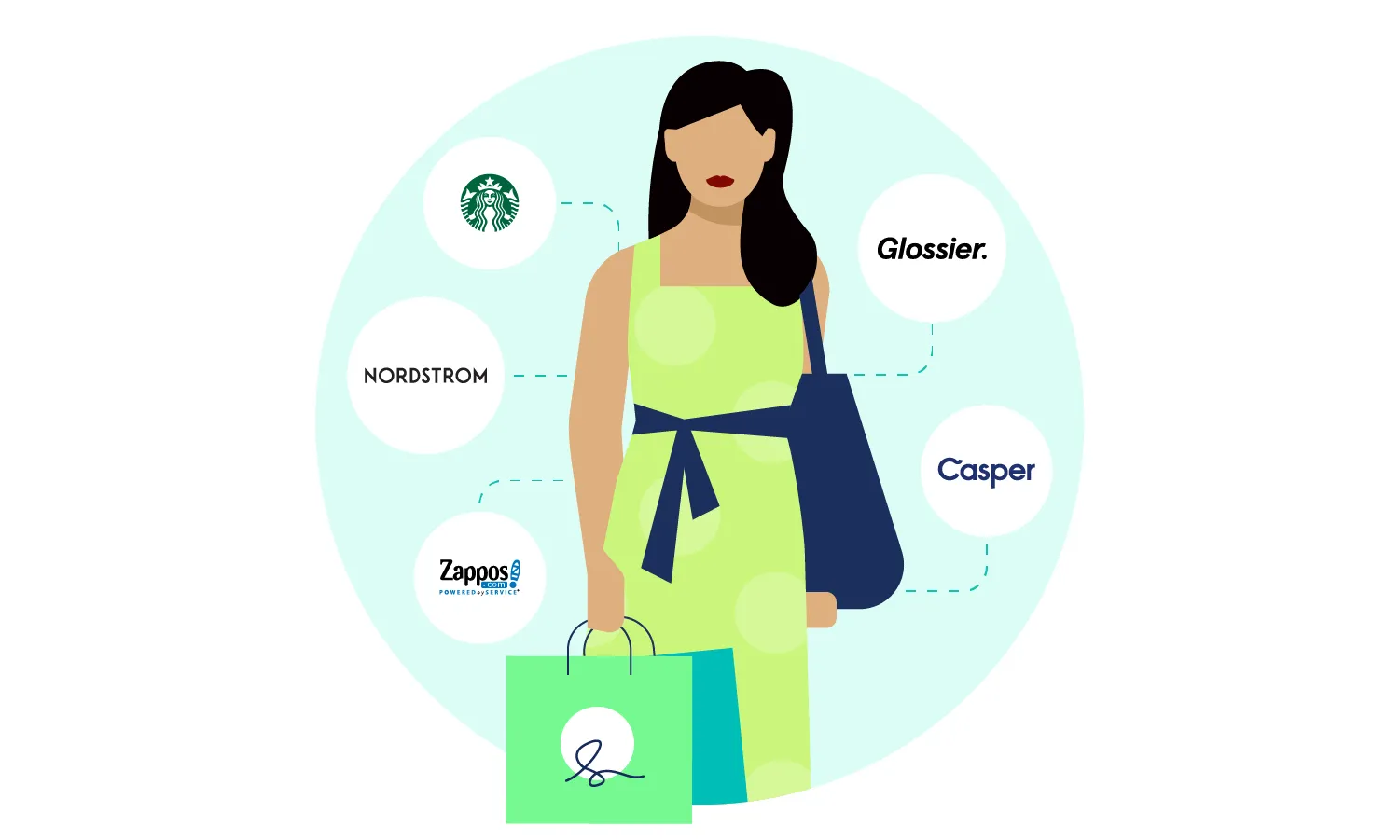May 9, 2022
5 brands that are winning by being customer-centric
To be successful in the current age of retail, achieving customer-centricity is essential. In this blog, read how five leading brands are using a customer-centric approach to win customers’ loyalty and grow business through incredible retail customer experiences.

Customer-centricity is the future of retail, and some retailers are already ahead of the curve.
These retailers are aware that if they don’t provide the best ecommerce customer experience possible, they’ll lose their customers’ attention.
The truth is, after three or fewer poor experiences, 73 percent of your customers will move on to a competitor. Brands that offer customer-centric experiences beat out their competitors every time.
By following the example of winning customer-centric brands you too can improve profitability, retain your customers, and grow your business through incredible retail customer experiences.
5 examples of brands that are winning through customer-centricity
Every brand should be focusing on creating phenomenal customer experiences in retail—and these experiences can be achieved through customer-centricity. Customer-centricity is the approach of putting your most valuable customers at the center of everything you do, informing all teams and strategies.
Below you’ll find five different brands that are finding success through customer-centricity and the tactics they’ve deployed to win their customers’ long-term loyalty.
1. Starbucks
Starbucks is a prime example of a brand focusing on their most high-value customers. Their most valuable customers are often the most pressed for time. Meeting this demand for efficiency comes at a challenge as Starbucks products often include a high degree of customization. They must maintain this balance between speed and freedom of choice while also guaranteeing the high degree of quality that their customers have come to expect.
Their solution to these challenges was the development of a highly-effective customer loyalty program. Through this program, their customers could order their drinks to be picked up at a scheduled time, allowing them to skip the line and minimize the time spent in-store. At the same time, these high-value customers are also rewarded with discounts and other promotions to encourage repeat visits and improve overall satisfaction.
2. Zappos
The Amazon-owned shoe and clothing retailer taps their support team to develop an engaging retail customer experience.
Zappos ensures their support staff is available 24/7, and are trained to make customer satisfaction and incredible retail customer experiences a key priority no matter what. While in some instances, this might lead to extended service conversations, by focusing on resolving issues they create a customer experience that is rewarding every time.
Additionally, the Zappos service staff is rewarded for their efforts based on customer satisfaction rather than task-completion, further incentivizing great customer service experiences.
3. Nordstrom
Nordstrom uses a customer-centric approach to improve retail and ecommerce experiences and drive retention rates. The Nordstrom shopping experience is highly personalized, making customers feel important rather than just another purchase.
Through the Nordstrom Analytical Program (NAP), marketers can predict purchasing behaviors and assist customers in product discovery. This program uses interactions with service staff and social media data to predict customer preferences. As a result, customers are rewarded with a more streamlined and one-of-a-kind purchasing experience.
4. Glossier
Glossier is a customer-obsessed beauty brand that taps into a deep customer knowledge to create content that excites and engages. Working across a myriad of social media platforms, Glossier can reach their customers directly where they are with content that speaks right to their behaviors and needs.
Glossier also elevates the voices of their customers by providing a streamlined two-way channel of communication. By gathering feedback from their customers they can shape retail customer experiences to directly meet needs and drive satisfaction. Customer community lies at the core of Glossier’s marketing strategy, and by empowering that community they’re able to drive revenue growth.
5. Casper
Casper has used customer-centric strategies to become a one-stop-shop for bedding and accessories. What sets them apart from other brands is their outstanding customer-service. They train staff to be incredibly flexible to customer needs, ensuring that their customers walk away feeling fully heard and satisfied, no matter what.
They reinforce these efforts by being incredibly confident in their product and believe that their customers need more than just 10-15 seconds to decide on a mattress. For this reason, they provide all of their customers with a 100-day free trial. If their customers don’t like their mattress for any reason at all they can return it back to Casper completely free of charge. Offering this high-degree of flexibility has led to them becoming one of the most customer-centric bedding brands on the market.
Become customer-centric with Lexer’s CDXP
Your brand can also win through customer-centricity, but you’ll first need a deep understanding of who your customers are. Lexer’s Customer Data and Experience Platform (CDXP) is the tool you need to reach that understanding. Lexer is the CDXP of choice for over 150 leading brands including Zimmerman, Kathmandu, Supergoop!, Sur La Table, and The Iconic. We transform disconnected data into actionable insights, and provide the workflow tools to automate and optimize the customer experiences that drive sales.
To learn more about how you can grow your business with Lexer, schedule a demo using the calendar below!
Speak with our retail experts

